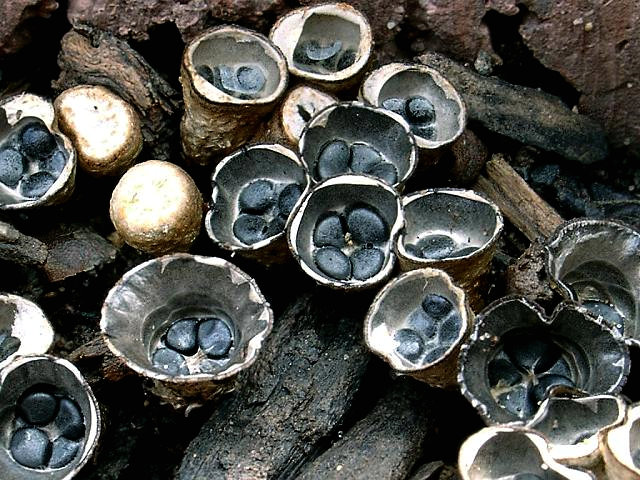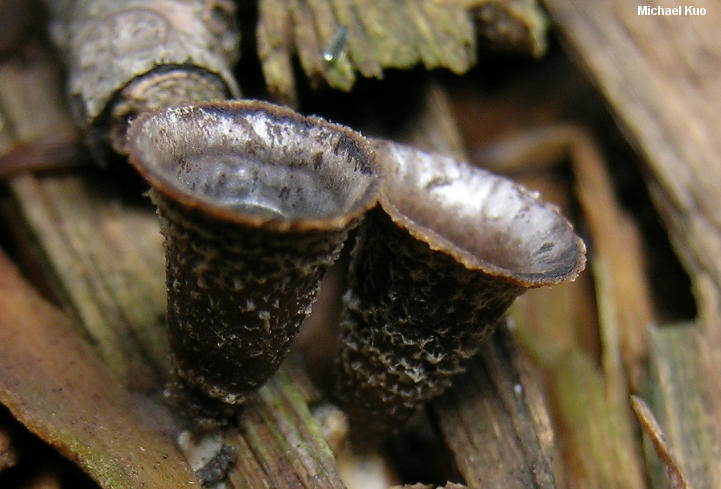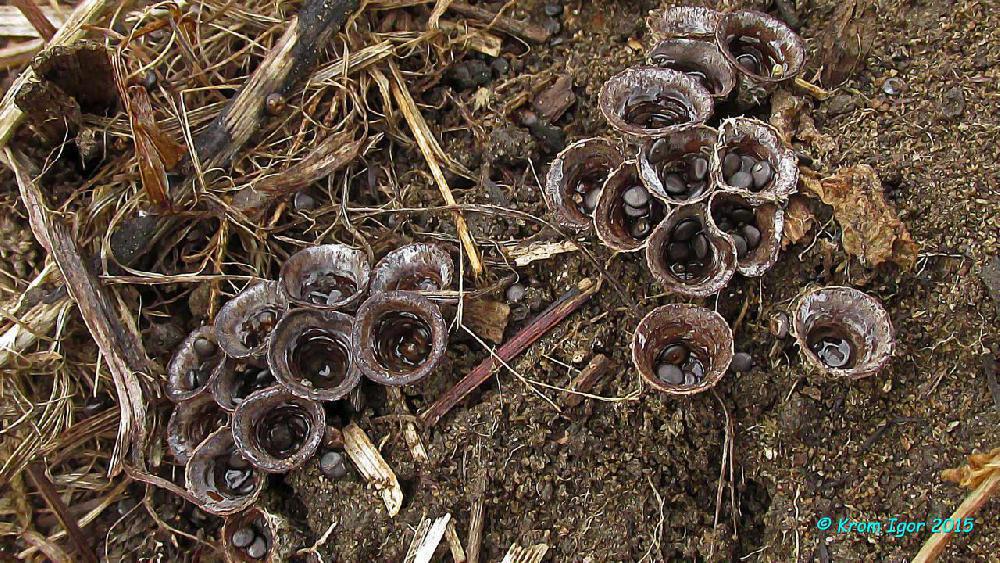Olla's glass: photo and description of the mushroom, edibility
Oll's glass (Cyathus olla (Batsch) Pers., 1800)

Insert-mushroom-tree Synonyms: Peziza ollaris Schaeff., 1774 Peziza olla Batsch, 1783 Cyathus bicolor Pers., 1800 Cyathus ollaris (Schaeff.) Gray, 1821 Cyathus complanatus DC.Peziza lentifera L., 1753Nullidularia. Nees, 1820 Nidularia fascicularis Schwein., 1832 Cyathus umbrinus Rabenh., 1871 Cyathus similis Cooke, 1879 Nidularia heribaudii Har. & Pat., 1904 Crucibulum albosaccum Lloyd, 1922
Etymology: Cyathus (Latin cyathus - glass) olla (Olla).
Fruit bodies: cup-shaped or bell-shaped, 0.3-1.1 cm high, 0.3-0.9 cm wide at the top, 0.1-0.2 cm wide at the bottom, covered with peridium, sessile.
Peridium: three-layered, dense. The layers are tightly connected. The peridium opens at the apex with a rounded opening covered with a leathery white epiphragm. The hole has a slightly wavy and bent back edge.
Exoperidium: all covered with thick felt, which then disappears, at first sandy, tannin brown, then dark sandy sometimes gray-brown to slightly gray, consists of hyphae 4.8-6 microns thick, with yellowish septa.
Mesoperidium: pseudoparenchymal, yellowish, cells 4.8-6 microns wide.
Endoperidium: thin, smooth, dark gray-brown to silvery-brown, formed from hyphae 2.4 µm thick, with yellowish septa.
Gleb: differentiates into a few (about 10) peridiols attached to the inner wall of the peridium with a thick white cord.
Peridioli: lenticular, 2-2.5 mm in diameter, grayish or blackish, with a thin whitish and tightly appressed membrane, the inner wall of which is lined with hymenium.
Spores: ovoid or ovoid-ellipsoidal, 7.2-12- (14.4) x 6-7.2 microns, more often 9.6 x 7.2 microns, smooth, colorless, episporium 1 micron thick.
Habitat: grows on dead branches, pieces of wood of various deciduous and conifers, needles, on plant stems, as well as on sandy and clay soil, in forests, gardens, in fields, among rocks in the mountains.
Season: May - October.
Distribution in Kazakhstan: Karaganda region., Semipalatinsk region., Almaty region.
Habitat: Kyrgyzstan, Uzbekistan, Estonia, Ukraine, Denmark, Norway, Sweden, Finland, Germany, Czech Republic, Slovakia, Austria, Hungary, Bulgaria, Romania, Switzerland, France, Italy, Spain, Africa, Israel, China, Tasmania island ...
Edible: inedible.


























